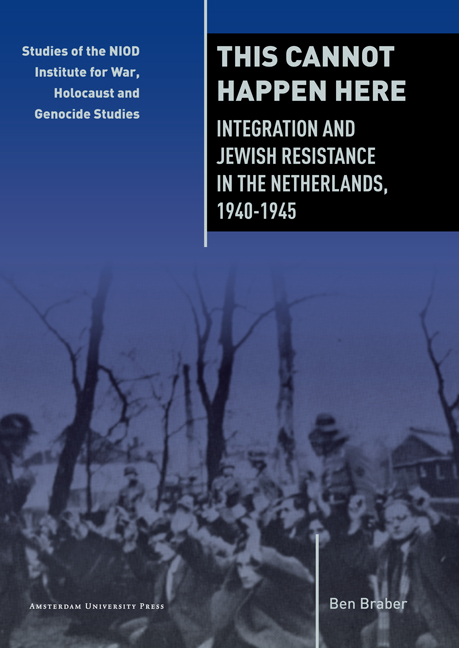5 - Segregation (November 1940 – May 1942)
Published online by Cambridge University Press: 15 January 2021
Summary
In 1942 the secondary school teacher J. Hemelrijk told his pupils why he disobeyed the German order to wear a yellow star:
Because I do not recognise their authority; because I reject their right to defile me; because I do not want to be a lamb for the wolves […] But we are told to regard it as an honour, not a disgrace; and to be proud of it […] Those who accept that, should wear it; I will not.
Hemelrijk had been removed from his post in a general school and transferred to a Jewish institution in Amsterdam. The teacher was an example of people who responded publicly to the German policy to segregate the Jews in the Netherlands from the rest of the Dutch population.
In the second half of 1940 and the first half of 1941 the German armies consolidated their success in Western Europe, despite a setback in the Battle of Britain, and they overran the Balkans and Greece. Germany and the Soviet Union were still holding to their 1939 non-aggression pact, which gave Hitler a free hand in the west and enabled Stalin to occupy part of Poland and the Baltic states and conduct a war with Finland. The occupiers of the Netherlands followed their early anti-Jewish measures with an order in November 1940 to register all Jewish officials and public servants in the Netherlands, who were subsequently barred from office, while non-Jewish civil servants had to sign a declaration to indicate they were not Jewish. This measure resulted in protests in the general population, notably among students and lecturers in universities, but at this stage general resistance groups remained small. Jewish protests were suppressed immediately, with Jewish protesters sent to concentration camps from where their death notices started to arrive quickly. A month earlier the registration of Jewish business assets had started, followed by the registration of persons. Jews had to register with local public offices. The civil servants marked their index cards in the population registers and their identity cards with a J. To distinguish whom they regarded as Jewish, the German authorities devised a formula, which said that persons were Jews when they had at least three grandparents who had been members of a Jewish congregation or had two grandparents who had been members of a Jewish congregation and were themselves member of a Jewish congregation or were married to a Jew.
- Type
- Chapter
- Information
- This Cannot Happen HereIntegration and Jewish Resistance in the Netherlands, 1940–1945, pp. 99 - 114Publisher: Amsterdam University PressPrint publication year: 2013



